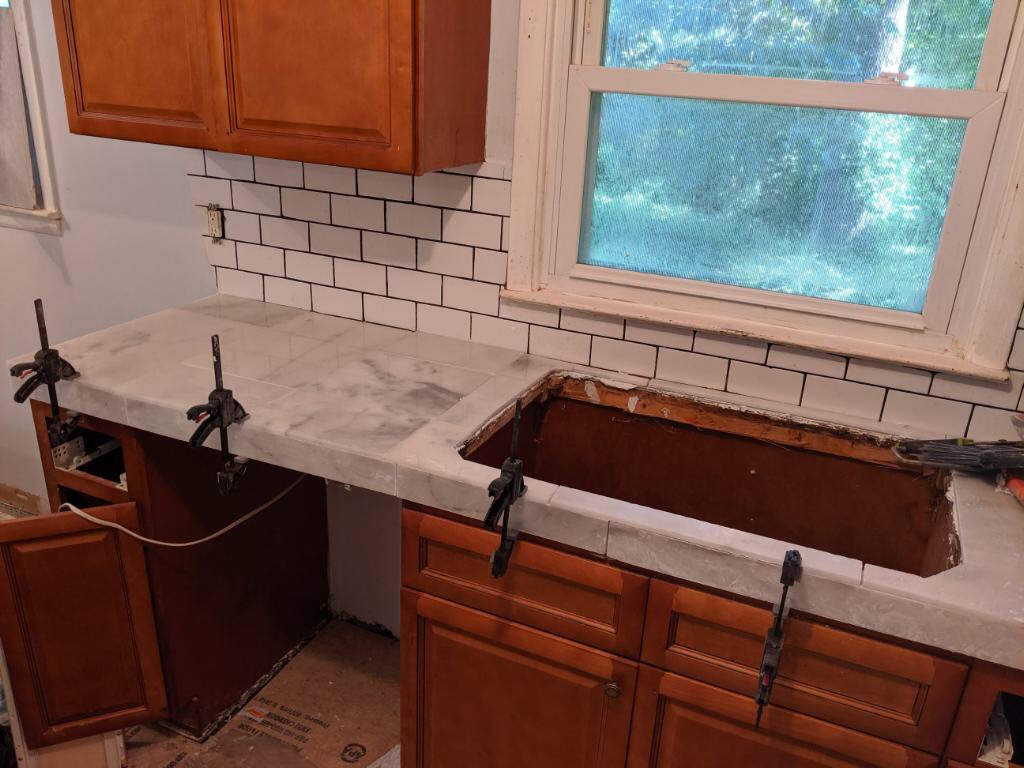
In June, I flew to Atlanta and toured a few of my rental units. This was the second visit I’ve made to these properties in four years.
During that visit, I met with my property manager and a few of my tenants, and I had lunch with my contractor. He and I met at a suburban Atlanta strip mall.
We ordered a basket of spicy chicken wings and fries, then took out a water-logged spiral notebook and planned a $20,000 renovation.
Here’s what the early brainstormed edition of those plans looked like:


This renovation should bring the rent from its current $850 – $950 per month (the bottom of the reasonable rent range for the neighborhood) up to around $1,500 per month (nearly doubling the rent! Whoa!)
This is a mostly cosmetic remodel, also known as a “remove and replace” job, in which the location of all the major components (plumbing, electrical, appliance locations) stay the same. The surface-level finishes (flooring, countertops, appliance devices) get swapped out for a cosmetic upgrade.
We did need to rip out the floors and subfloors (it was time), which means this happened:
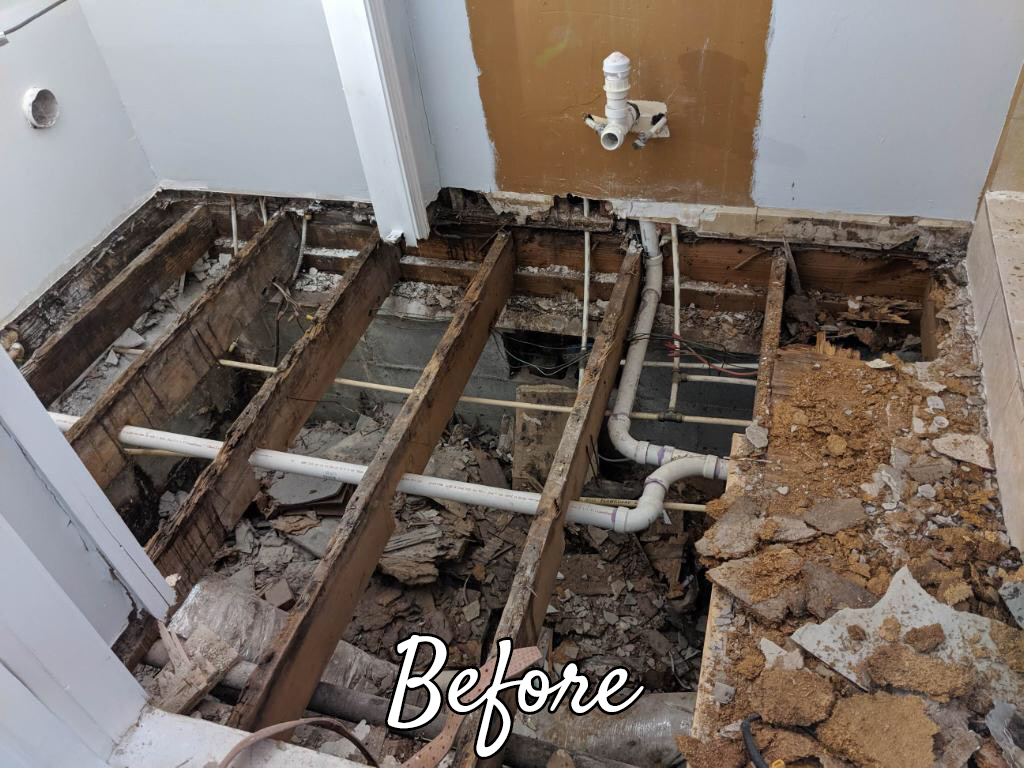
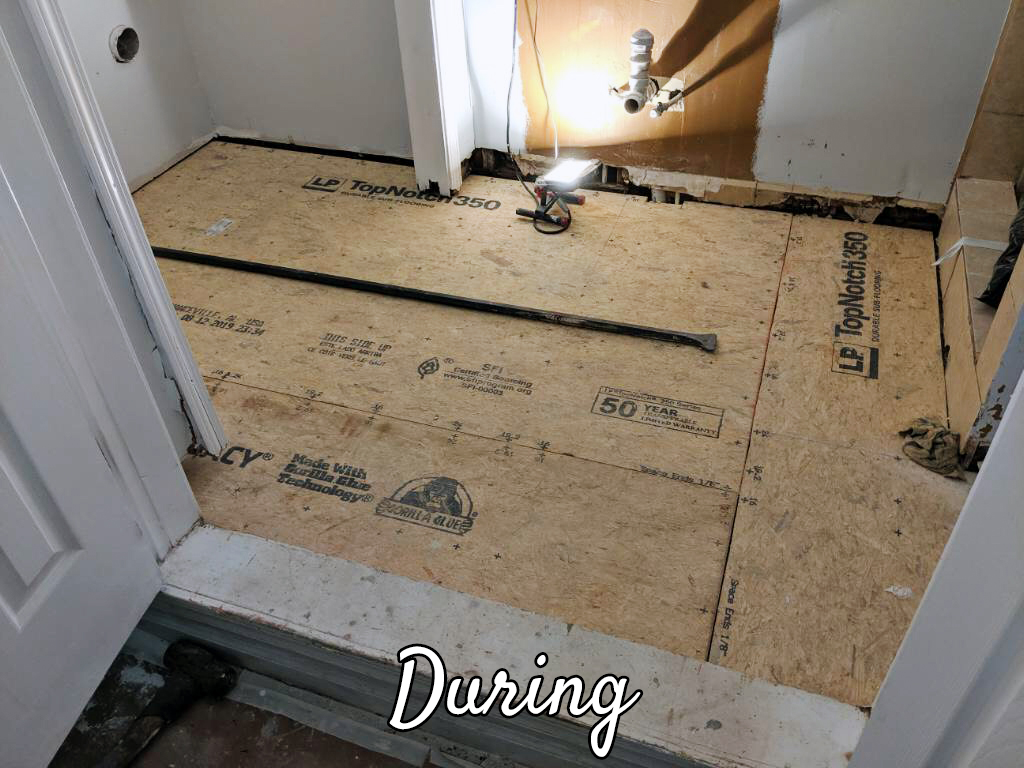

We replaced the popcorn ceiling with a flat ceiling and added roughly six inches of ceiling height in the living room by installing a tray ceiling.
Check it out —
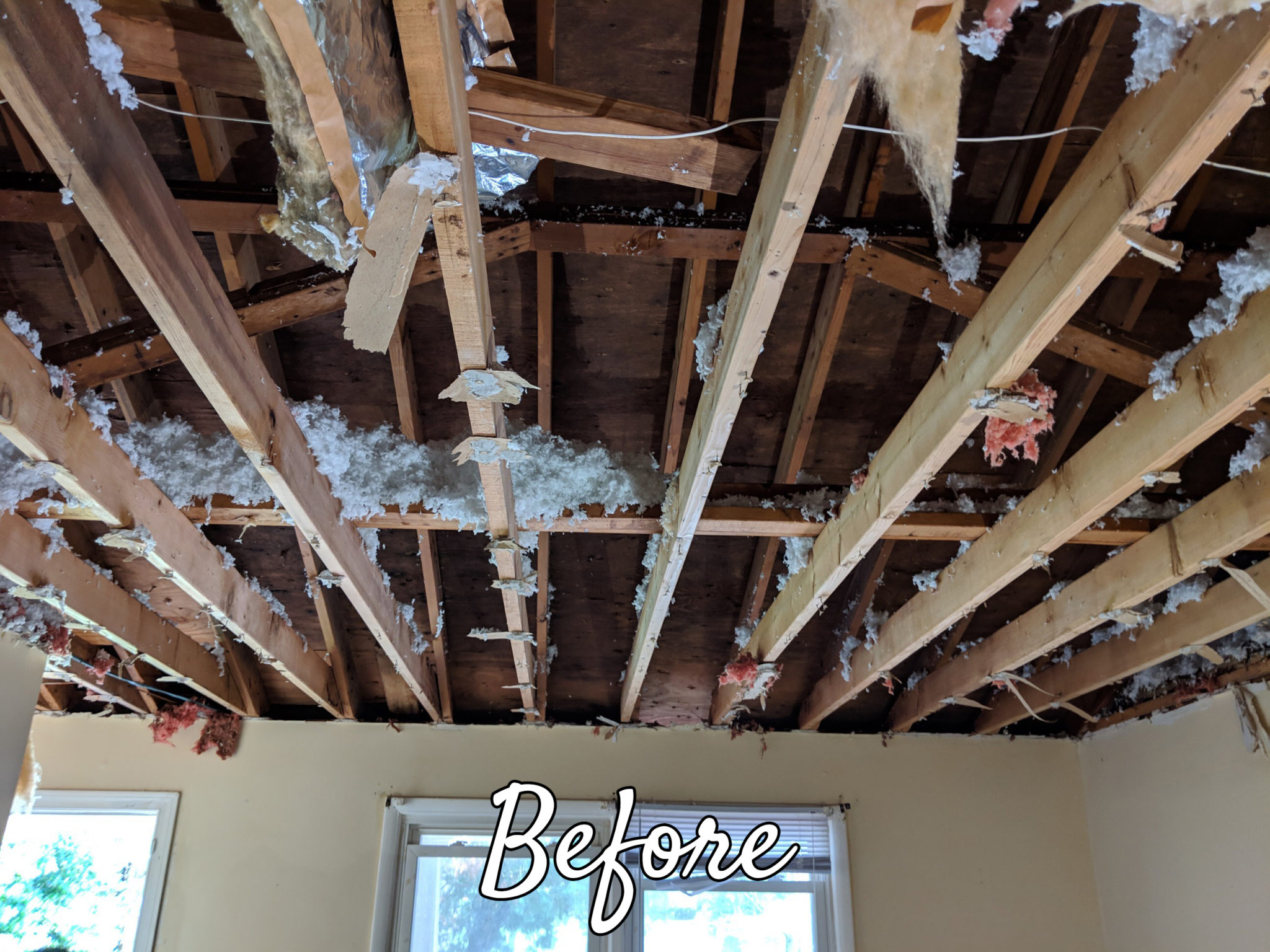


Here’s the thing, though —
The only time I spent in Atlanta (where this rental property is located) took place during a two-day visit in June.
Since then, between June and September, I’ve traveled to Colorado Springs, San Diego, Mexico City, Vancouver BC, Croatia, Slovenia, Washington DC, and Japan. (Travel pics on Instagram). And when I’m not traveling, I’m at home in Las Vegas.
I haven’t set foot inside that property since we sketched out these plans. I’ve managed this project by text message from North America, Europe and Asia.
How?
Here’s an example of what this looks like at the day-to-day level.
I woke up one morning to find a text message — no written text, just a photo — that looked like this:
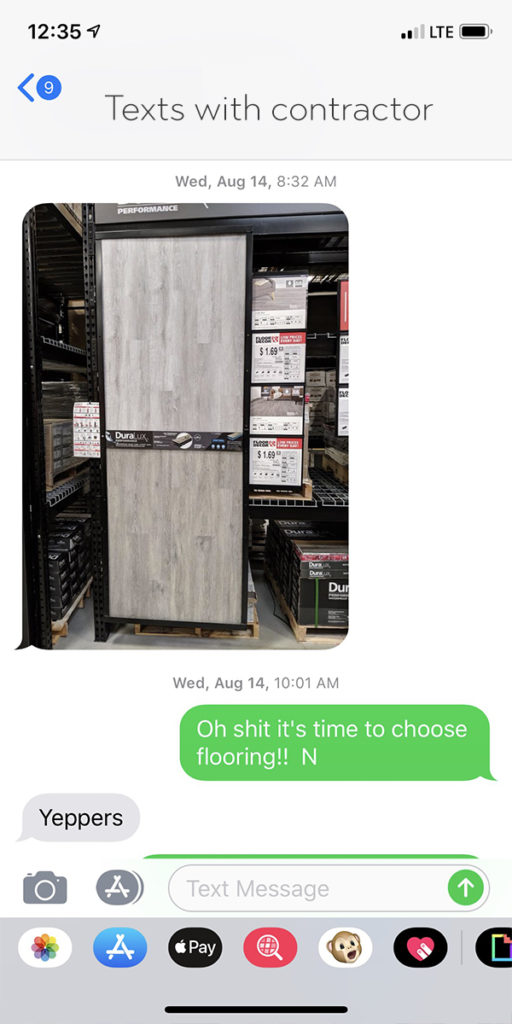
I asked my contractor to send me a photo of the kitchen cabinets and countertops, so I could see how the flooring options would match with the rest of the house. He did, and this conversation ensued:
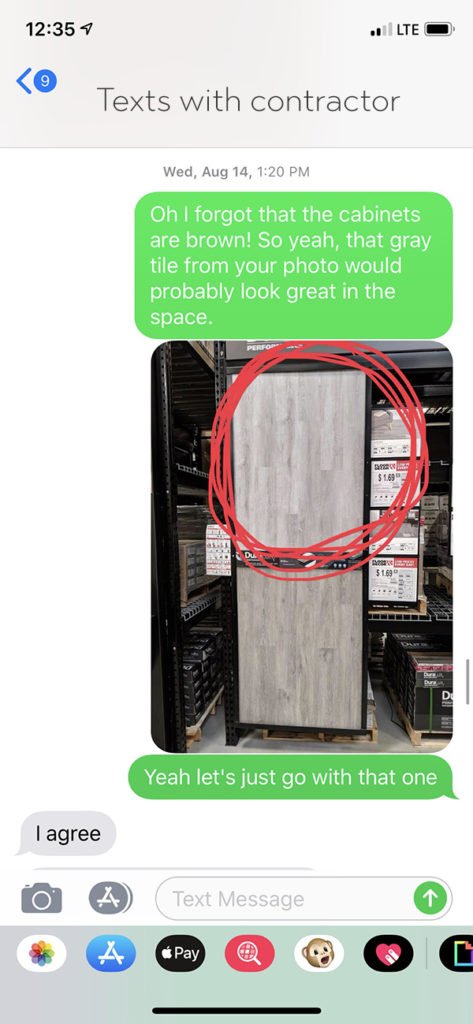
And just like that, I picked a flooring option in less than 5 minutes from 2,000 miles away.
Then he asked about the type of tile I want to install in the bathroom. Here’s how that conversation went:

Simple enough. 😎
Here’s the thing, though.
I realize this sounds weird + interesting + whatever-else-you-might-be-thinking. How could I possibly manage a property renovation by text while traveling to a combination of five countries and three states plus D.C.?
But compare it to this:
At the same time that this project was going on, I was also coordinating with my developer about the redesign of the course website.
Our rental property investing course, Your First Rental Property, lives on a platform that we custom built. We wanted to optimize the course for student success, and we didn’t think that those plug-and-play teaching platforms were good enough. So we built our own.
As I traveled, through a combination of email and Slack messages, I coordinated with the developer on this project, as well.
And I made countless design decisions on this project, as well.
For example:
We morphed this:
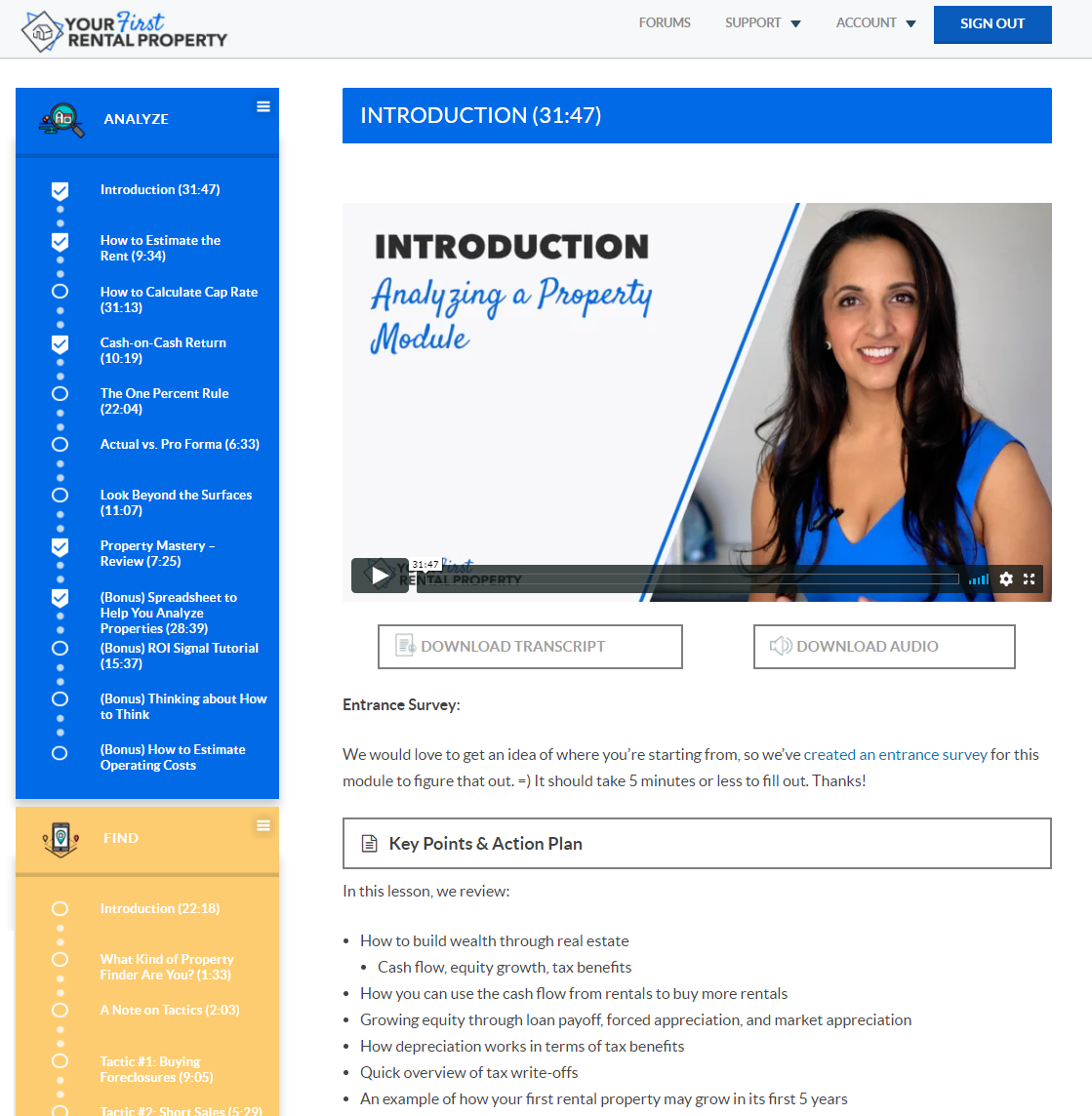
into this:

… which, as you can imagine, involved dozens of decisions on everything from layout to color to the thickness of the course progress bar at the top of the page.
(And I’m not even going to mention all the Easter eggs we scattered throughout the course. You’ll see.)
But I’m betting that story doesn’t sound as strange.
We know that entrepreneurs work with a remote team on online projects.
We’re used to hearing those stories.
And we know that all types of companies spanning an enormous range of industries and sizes, ranging from major Fortune 500 corporations to one-person solopreneur startups, often manage projects with a remote workforce.
That’s normal.
But for some reason, working with a remote team on the management of a physical property — like a single-family home or a duplex — is an idea that scares or intimidates many people.
Hmmm.
I’m hoping to change that.
I’m hoping to show people the best practices of hiring and managing a remote team, applied to the world of real estate investing.
These skills are transferable. They apply regardless of whether you’re running an online business, managing a rental property, or both.
Managing a rental property is a hybrid between making an investment and running a small business. Strength in one field translates to strength in the other.
If you lose sight of the fact that a rental property is a business — if you forget to treat it like a business, and instead treat it like a speculative foray or a casual hobby — problems arise.
But if you put systems in place to manage your business efficiently, well …
… then you could spend your summer traveling across five countries, and at the end, your rental property looks like this:

And it lists for nearly double the rent.
Win-win.
Enrollment for Your First Rental Property opens on November 30th, 2020.
For now, if you want more details on the course, you can click here. If you know you’re interested, join our VIP list for the latest email updates. You’ll be the first to know about everything related to the course!
See you in class!
– Paula
P.S. Don’t forget to → read this ← for all the details about the course. Enjoy!